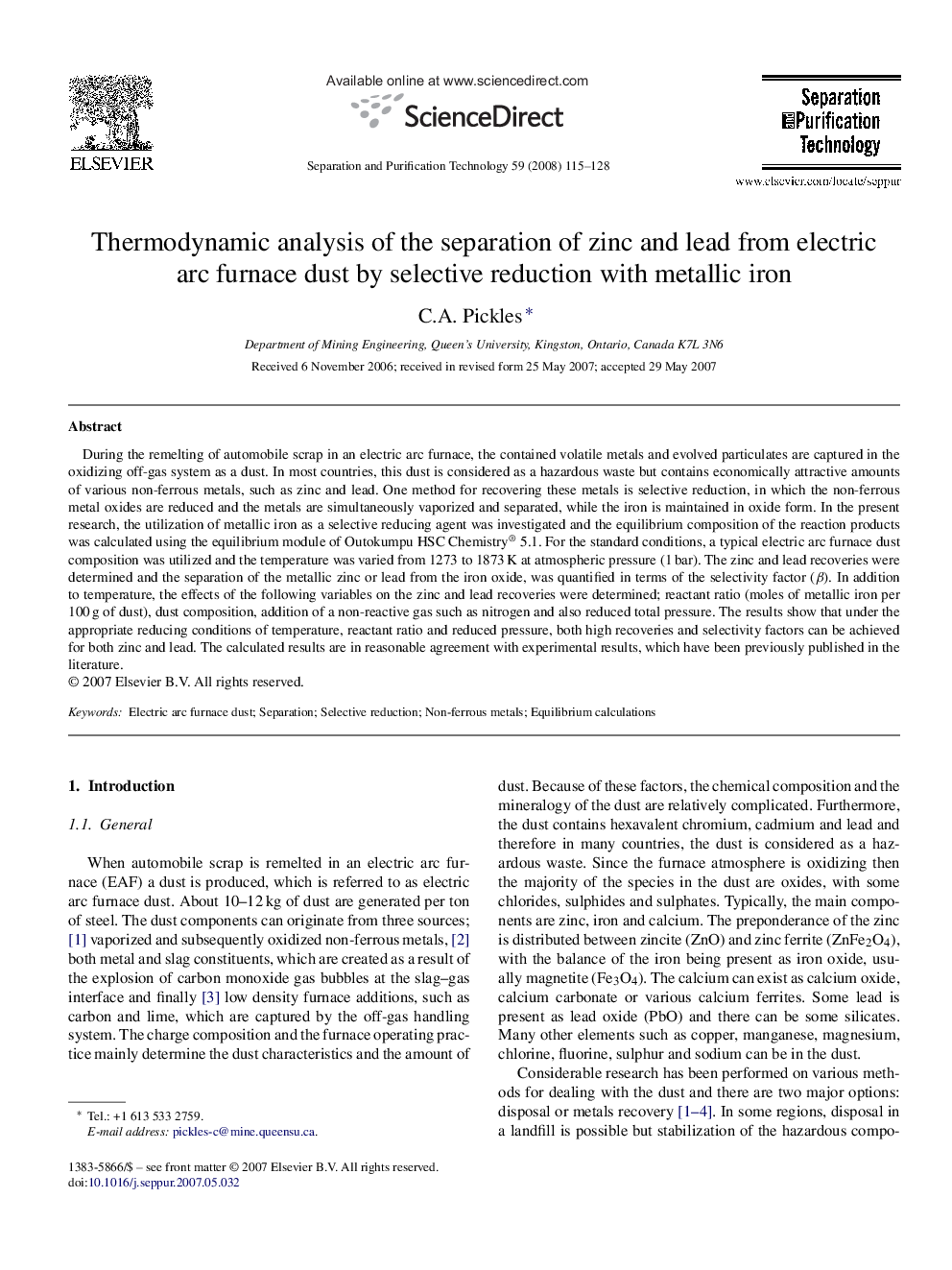| کد مقاله | کد نشریه | سال انتشار | مقاله انگلیسی | نسخه تمام متن |
|---|---|---|---|---|
| 643938 | 884399 | 2008 | 14 صفحه PDF | دانلود رایگان |

During the remelting of automobile scrap in an electric arc furnace, the contained volatile metals and evolved particulates are captured in the oxidizing off-gas system as a dust. In most countries, this dust is considered as a hazardous waste but contains economically attractive amounts of various non-ferrous metals, such as zinc and lead. One method for recovering these metals is selective reduction, in which the non-ferrous metal oxides are reduced and the metals are simultaneously vaporized and separated, while the iron is maintained in oxide form. In the present research, the utilization of metallic iron as a selective reducing agent was investigated and the equilibrium composition of the reaction products was calculated using the equilibrium module of Outokumpu HSC Chemistry® 5.1. For the standard conditions, a typical electric arc furnace dust composition was utilized and the temperature was varied from 1273 to 1873 K at atmospheric pressure (1 bar). The zinc and lead recoveries were determined and the separation of the metallic zinc or lead from the iron oxide, was quantified in terms of the selectivity factor (β). In addition to temperature, the effects of the following variables on the zinc and lead recoveries were determined; reactant ratio (moles of metallic iron per 100 g of dust), dust composition, addition of a non-reactive gas such as nitrogen and also reduced total pressure. The results show that under the appropriate reducing conditions of temperature, reactant ratio and reduced pressure, both high recoveries and selectivity factors can be achieved for both zinc and lead. The calculated results are in reasonable agreement with experimental results, which have been previously published in the literature.
Journal: Separation and Purification Technology - Volume 59, Issue 2, 15 February 2008, Pages 115–128